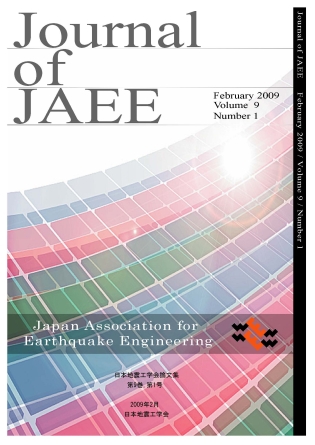
- |<
- <
- 1
- >
- >|
-
Takeko MIKAMI, Nozomu YOSHIDA, Kenji HARADA2016Volume 16Issue 11 Pages 11_1-11_10
Published: 2016
Released on J-STAGE: December 26, 2016
JOURNAL FREE ACCESSEmpirical equations of liquefaction strength curve, which is applicable in wide range of number of cycles causing liquefaction and variety of sandy soil, are proposed for the effective stress analysis. Past similar researches have several disadvantages from the practical point of view; soil classification is not considered and applicable range is limited to small number of cycles or uncertain. In our research, many test results on undisturbed samples which include variety of soil classification and with number of cycles causing liquefaction larger than 100 are collected. About 200 test results are classified based on the geological age and the fines content. Considering the engineering practice, equations predicting RL5 and RL100 from RL20 is proposed by classifying the geological age (Bs+As and Ds). Finally, a smooth equation is proposed for liquefaction strength curve which covers number of cycles causing liquefaction between 5 and 100.
View full abstractDownload PDF (751K) -
Hiroshi FUKUYAMA, Masami FUJISAWA, Akio ABE, Toshikazu KABEYASAWA, Zen ...2016Volume 16Issue 11 Pages 11_11-11_25
Published: 2016
Released on J-STAGE: December 26, 2016
JOURNAL FREE ACCESSThis paper shows the reproducibility and stability of the effect of reducing seismic-response acceleration in the ancient substructures with numerous basket-shaped relics with rubbles filled, called shicras to gain deeper insight into the engineering significance of ancient building techniques used about 3,500 to 5,000 years ago. The shaking table tests showed a mechanism that spherical shicras started to rotate when the seismic-response acceleration level exceeded the given value, possibly enabling the effects of reducing seismic-response acceleration to be achieved.
View full abstractDownload PDF (1927K) -
Osamu ITAGAKI, Tatsuro MATSUURA, Atsushi HATTORI2016Volume 16Issue 11 Pages 11_26-11_40
Published: 2016
Released on J-STAGE: December 26, 2016
JOURNAL FREE ACCESSWe applied an analysis method for estimating the potential direct economic damage and death toll caused by multiple disasters of earthquakes and floods. To extract the effects of various measures in the analysis, we used a river about 60 km long as our case study. We assumed a set of multiple disasters in which one of two floods occurs after one of three earthquakes and estimated the damage in the river. We estimated the damage in 120 cases by changing the scales of each earthquake and each flood, the interval between the earthquake and flood, and the needed disaster damage reduction measures.
View full abstractDownload PDF (3817K) -
Atsushi WAKAI, Atsushi NOZU2016Volume 16Issue 11 Pages 11_41-11_61
Published: 2016
Released on J-STAGE: December 26, 2016
JOURNAL FREE ACCESSThe pseudo point-source model is one of the source models applied to explain strong ground motions of the 2011 Tohoku earthquake. We have used this model to simulate strong ground motions at strong-motion stations in the Kanto Plain, Japan, and its accuracy was examined primarily based on Fourier spectra. The results indicate that the Fourier spectra were underestimated at many stations by the original path model, in which two factors are neglected: (1) the geometrical spreading term inversely proportional to the square root of the distance at great distances, and (2) the lower bound of the Q value at low frequencies. Using a revised path model that incorporates these factors, good agreement was achieved between the observed and synthetic Fourier spectra in the Kanto Plain.
View full abstractDownload PDF (3872K)
- |<
- <
- 1
- >
- >|